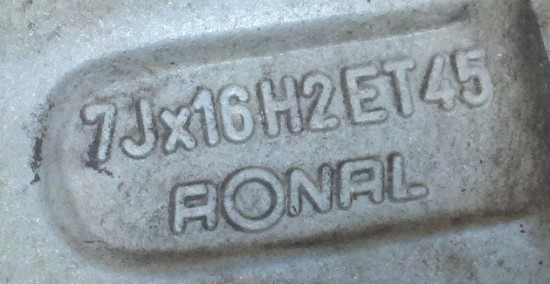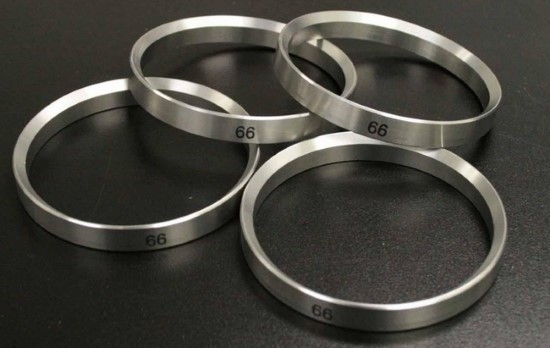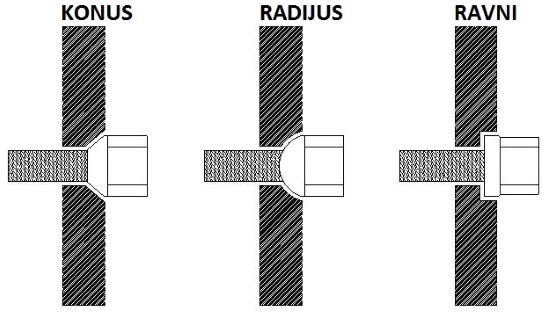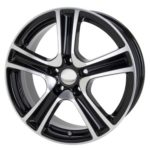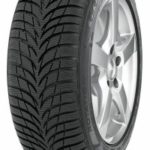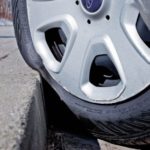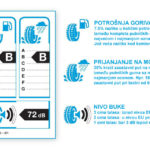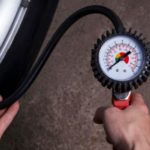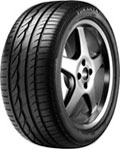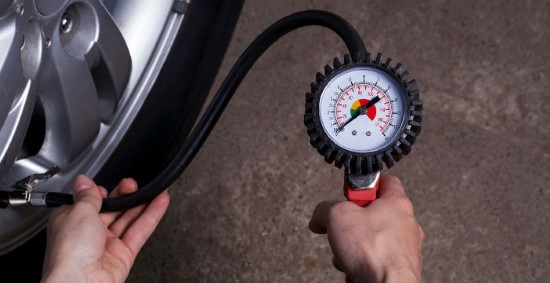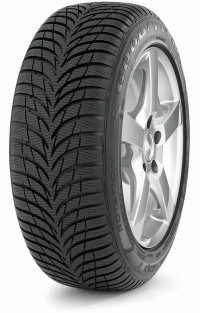Wheels - Everything I wanted to know about wheels - Part 1
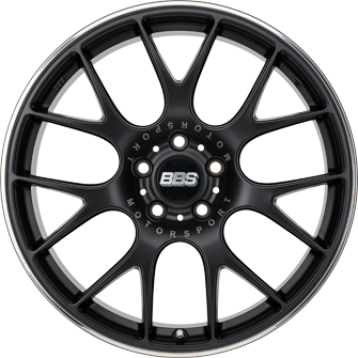
Wheels
We know that the warning will not bother you when you buy gume and rims of a different size than you currently have with many younger riders, with no effect, because they only matter three things:
- Dinner
- that it can be mounted
- to look nice
Broader does not mean better (but means more expensive)
Just because you bought a cheap 17-something that can be screwed onto the hub of your car does not necessarily mean that they are appropriate for you, not only because the power / torque of the engine, as well as the transmission in the transmission are not intended for that much wheel or what it will hit the wings when turning.
First you need to determine which wheels are factory-fitted for your car (just in case - maybe the previous owner has already changed the wheels), and based on them make a choice of alternatives. Tires should also be considered at the same time so as not to change the overall diameter of the wheel too much.
A site calculator can help you with this www.internet-sale-guma.com/calculator-dimension, in which you enter the factory or tire dimensions you have or plan to buy and the dimensions of the others you plan to buy, after which you get information on the differences in tire diameter, vehicle height, etc.
However, wide low profile tires can be a lot more expensive than the ones you currently have, so many drivers end up buying used tires, which can be extremely dangerous - although the pattern is good, you don't know what all the previous owners survived, ie. have any internal damage.
What rims does my car have?
Please refer to the documentation that came with your car for this information, and if you do not have it or have not received the documentation, you can try it from your local representative or through the website www.wheel-size.com.
You choose the make, model and version of the car, after which you get a table with dimensions of wheels and tires that are factory fitted (bolded - in bold letters and numbers), as well as optional dimensions ("bold" letters and numbers).
You can also find this information from reputable local tire, wheel and tire retailers.
Please note that with one version of the car, multiple tire / rim combinations can be factory-made. In this case, you can easily change the wheel dimensions as long as you adhere to the factory-set dimensions.
If you decide to go out of this box, plan your purchase well, and you need to know all the dimensions of the wheels and their markings. Also, if you are planning to buy rims from companies that exclusively sell rims, there is usually a similar base on their sites with rims available for your car.
What to know about rims before buying?
You should know the following dimensions:
- rim diameter
- rim width
- the number and range of holes
- diameter of the central hole
- offset ("offset" in English)
Let us recall beforehand how the dimensions of tires are marked - e.g. 225/45 R17:
225 - tire width in millimeters
45 - the ratio of the width and height of the sidewall of the tire in percent
R - radial tire construction
17 - Inner tire diameter in inches / inch (ie can only be mounted on a 17 inch wheel rim)
Rim Width and Diameter (7,5Jx16)
You started looking for wheels for your car and you came across some dimensions like 7,5Jx16 or 7,5 × 16 (without the letter J). It is a common opinion that the mark 7,5J reads "seven and a half iota", ie. that the width of the rim is expressed in jots.
This is a mistake - the letter J indicates the rim rim shape, which prevailed with passenger vehicles, while tagging JJ we can find the wheels for off-road vehicles, ie. for so-called SUVs. B-rims are also for passenger vehicles, but only if their width is not more than 6 inches.
Basically, the unit of measurement for wheel dimensions is an inch - better known in our country as a inch (25,4 mm), not a letter J or iota.
7,5Jx16 - the first number indicates the width of the rim, and the second its diameter. Our rim is therefore 7,5 inches wide, and its diameter is 16 inches (so-called "sixteen").
Number and range of holes (4 × 100)
The number of holes for the screws must be the same, logically, but also the imaginary circle passing through the center of all the holes must have the same diameter.
4 × 100 - four holes, with a circle diameter of 100 millimeters
5 × 100 - five holes, with a circle diameter of 100 millimeters
The diameter of the center hole (hole) on the rim
It is very important that the central hole on the rim is the same diameter as the hub (ie the hub outlet or the centering ring of the hub - whatever we say, the essence is the same), of course with minimal tolerance - just enough for the rim to be easily "pushed". , without much "air".
Then you take the screws and lock the wheel. Otherwise, if any the free space between the hole and the hub, it is much more difficult to position the wheel correctly when screwing, so the wheel may be tilted. Even in such cases, it is possible to screw the wheel properly with great care, but later vibrations may occur while driving, especially at higher speeds.
However, if the center hole on the rim and hub do not match, there is a very simple solution. In fact, this situation is very common when buying aftermarket alloy wheels, and we will explain why.
Rings for alloy wheels?
If you find "ideal" wheels, but their center opening is too large, there is a solution in the form of rings that fill the void and allow the central hole of the wheel to properly fit into the hub drain.
This is because aftermarket rim manufacturers want one product to cover as many car models as possible. Since they already have to make multiple versions, with different wheel diameter and width, number and range of screw holes and offset, they then fit a larger center opening so customers can fit the ring and fit the rim to their car.
This is quite common and normal - there is no reason to avoid a rim. Just make sure the rings are of good quality and that in the end everything fits in properly.
Are metal or plastic rings better?
The rings can be plastic or metal, usually aluminum, ie. some of its alloys. Many believe that they should not be made of plastic because they carry a large mass on them, which is wrong.
On the contrary, precisely Plastic are recommended by experts, since they do not in fact suffer as much force as is usually thought. It is only important that there is no "air" when the wheel is mounted - ie. that the rim is nicely centered and that the screws can be tightened correctly.
Namely, for carrying a car mass, i.e. its transmission on the rim is driven by screws, which they do great thanks to the tapered or radius shape of the underside of their head. That is why it is extremely important to match the shape and dimensions of the screw head with the screw holes in the rim.
There is no need to combine a cone and radius - theoretically, the wheel can be tightly tightened with the wrong screws, but over time it can cause serious problems.
Some drivers claim that they have no problems even though they drive without rings, and the diameter of the holes in the rim and hubs do not agree. In many cases their claims are true, but this is by no means recommended!
Offset - ET45 (What is an offset, why is it important and can we change it)
Offset does not have an adequate translation into our language as a single word. It denotes the distance of the wheel axis and the wheel surface (with screw holes) that rests on the hub.
It is marked with ET - from the German word "Einpresstiefe", which can be translated as penetration / insertion depth.
Therefore, the ET45 means that the part with the screw holes is 45 millimeters away from the wheel axis, ie. It is "ejected" out by 45 mm, so that it fits more under the car when fitting the rim. By unwritten rule, all wheels have a positive offset.
Therefore, if you take a new rim of the same width with an oversized offset or an oversized rim with the same offset, the rear of the rim may come into contact with the suspension elements or the brakes.
You do not have to follow this value blindly, but it is recommended that the difference from the factory value be as small as possible. However, some drivers deliberately take rims with smaller offset to extend the wheel track in order to:
- improve vehicle hold in curves
- it gives the visual impression that tires and wheels are wider on the car
This is a relatively complicated topic and it is not recommended to overdo it if you are not sufficiently technical, as there can be some negative effects such as impaired steering sensitivity (eg "heavier" steering wheel) or greater instability when braking if the front wheels brake unevenly. The larger and wider the wheels, the more negative the effects.
Simply, designers have painstakingly calculated and tested the optimal measures and characteristics of the various suspension elements to make the car comfortable enough, but also agile, stable and manageable, which is not only a matter of driving pleasure but also safety.
Spacers
Some drivers extend the wheel track by installing a spacer, but we'll talk about that in the next section.
New screws for new wheels?
The screws can sometimes stay the same, and sometimes they have to change. It is necessary to determine if the new wheels use a cone or radius screws (or perhaps with a flat contact surface - used by Peugeot and Citroen).
Important - by no means combine the rim with tapered holes if it is intended for radius screws and vice versa! It may seem to you that tightening the rim can make it hard, but improvisation can be very dangerous.
It is also important that the screws are of good quality in terms of the materials they are made of and the dimensions. According to Marko Vracar from the Vracar company, which manufactures and sells spacers, rings, screws and other wheel products, he exclusively uses 4732 steel for the manufacture of screws and nuts. , which gives corrosion protection and high gloss.
Conclusion
In the following text, we will deal with tire and rim compatibility. Which tire can be mounted on which rims and whether their combination will create a problem when mounted on a car, ie. will it hang its wings and the like?
If you have a 7,5Jx16 wheel, what tire dimensions can be fitted to it? What happens if you "push" too much rubber on the tire too wide? The text will be published shortly.
Prepared by: Dragan Romčević
Source: www.polovniautomobili.com
Recommendation of similar texts:

Hi there, I am Mladen and I am an auto enthusiast. I started this blog years ago to help like minded people share information about latest cars, car servicing ideas, used car info, exotic cars, and auto technology. You will find helpful articles and videos on a wide variety of cars - Audi, Mercedes, Toyota, Porsche, Volvo, BMW and much more. Ping us if you have anything cool to share on latest cars or on how to make older cars more efficient, or just want to say hi!

